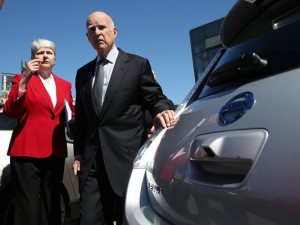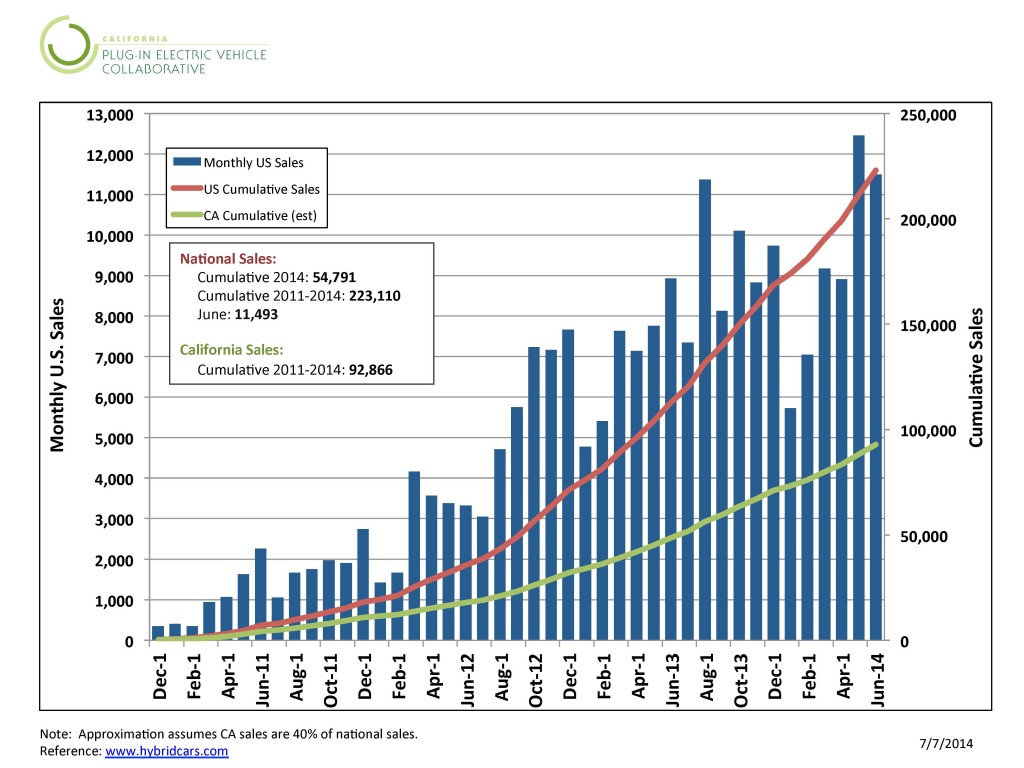The New Yorker runs a really frustrating article from a disgruntled EV owner. This Angeleno has no dedicated parking or charging at home and is relying on the public charging network. He rightly describes the frustrations with that network — the breakdowns, congestion, and inconvenience of it all.
But honestly: why would someone without dedicated home charging get an EV? The public charging network is just not there right now. The initial EV market needs to focus on people who can charge at home — or at least at work. Once you get that market ramped up and improve public charging (including more dedicated charging in condos and apartment buildings), automakers can expand the market to others.
That may not be of great comfort to those without dedicated home charging, but it’s the reality for an emerging technology.
Given that reality, why would the New Yorker privilege a story that highlights the inconveniences of a non-representative EV owner? And meanwhile, the national media is running all sorts of negative stories on EV sales, while LEAFs have record-setting sales.
I guess the bad story sells better, but it’s unfortunate to see this misleading picture presented to the general public.
The website Clean Technica presents interesting information on electric vehicles sales compared to top car sales in the US generally. The news is mixed but to my mind ultimately positive. The bad: EV sales are pretty tiny compared to ICE (internal combustion engine) vehicles, with no true EV cracking the top 20. The Toyota Prius Plug-In (with the first few miles all-battery electric but then traditional hybrid miles from thereon) hit #15. But:
13.5 times more units of the Toyota Camry were sold than the top-selling electric car, the Nissan Leaf.
However, the overall trajectory of the EV sales is outpacing hybrids at a similar stage of introduction, and this disruptive technology is showing a hockey stick-like sales trajectory. Here’s the most recent EV sales chart from the PEV Collaborative:
And as the Clean Technica post notes:
If the Nissan Leaf quadrupled its sales (or if the Tesla Model III came along and sold 4 times as many cars per month as the Leaf), it would make it into the top 20 best-selling cars in the US.
Quadrupling sales doesn’t seem like that big of a feat giving how fast sales have been increasing, the fact that most Americans still aren’t aware of the Nissan Leaf, and the fact that disruptive technologies see exponential growth, not linear growth.
EV companies and advocates still have a ways to go with the technology: we need cheaper vehicles with a longer range. Tesla’s gigafactory is the big hope in this respect, but even without a game-changer factory, the technology is steadily improving and becoming cheaper. The sales data we see here, to my mind, offers cause for cautious optimism.
 This past Friday in Sacramento, the Office of California Governor Jerry Brown convened a few hundred electric vehicle experts for an update on California’s progress deploying EVs. The attendees were mostly from California, including utility representatives, advocates, researchers, and officials. However, experts also came from places ranging from Oregon to the Netherlands. Some informational highlights from the conversation:
This past Friday in Sacramento, the Office of California Governor Jerry Brown convened a few hundred electric vehicle experts for an update on California’s progress deploying EVs. The attendees were mostly from California, including utility representatives, advocates, researchers, and officials. However, experts also came from places ranging from Oregon to the Netherlands. Some informational highlights from the conversation:
- The Netherlands recently reached a major milestone: 25% of their new car sales were electric vehicles. Part of the appeal: the Netherlands waived the sales tax on EVs and has invested heavily in charging stations. Maybe a good lesson for California as EV rebate money runs out? Waiving the sales tax on EVs, if it could pass the Legislature, would be a great incentive for purchase.
- Most Nissan LEAF, Chevy Volt, and Toyota Plug-In Prius customers were motivated by the environmental benefits and fuel savings. Tesla customers, however, were primarily motivated by vehicle performance and access to new technology. Survey results found here (collected by the entity that sends out vehicle rebates, which is a great source of market data like these).
- Most electric vehicle customers skew to the older, whiter, more highly educated, and male demographic.
- HOV (carpool) lane access was an “extremely or a very important purchase motivation” for 59% of EV customers. This bodes poorly for California as the state is running out of carpool lane stickers to distribute — like in a matter of months. The Governor’s Office vowed to make addressing this need a priority.
- California sales of EVs currently represent one-third of the national market, with 64,649 sold to date. The sales graph is definitely looking like a hockey stick, which is an incredible advance for the technology.
- An electric utility rep says that sales of California’s low carbon fuel credits could mean $200 a year back in the pockets of EV drivers. The low carbon fuel standard is part of California’s efforts to reduce greenhouse gas emissions to 1990 levels by 2020, and it requires fuel refiners to either limit the carbon content of their fuel or purchase credits on the open market. Since electric utilities are providing low-carbon fuel (electricity) to their EV customers, the utilities get to sell the credit to oil companies and then return the money to the EV drivers. And if the utility is saying $200 a year, it’s probably more like $500 a year, which is basically free charging at home for most EV drivers.
- Atlanta is the number 2 market in the US for Nissan LEAFs, due to HOV access and other state incentives in a congested urban area. San Francisco is #1 and Honolulu is #6 (and it could rise to the top in terms of percent of EVs sold each year). Even Nashville clocked in at #9. I like see red state cities showing up on this list. EVs should be a bipartisan priority.
Ultimately, the Friday convening was a success in terms of sharing the latest information, providing participants with a chance to influence state priorities on EVs, and giving people in the field a motivational boost. The state is doing incredibly well in terms of EV adoption, as the hockey stick sales graph and anecdotal observations can attest. Look for the key near-term priorities to be an extension of the HOV sticker program and making that low carbon fuel standard rebate happen quickly.
Full speed ahead, California EV drivers and those who will soon be one!



